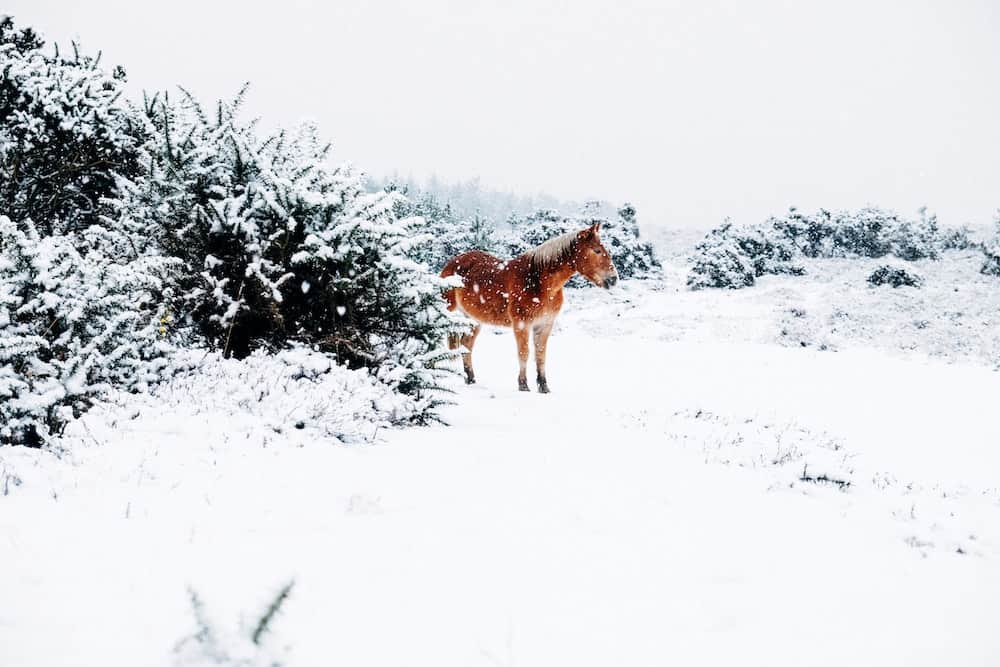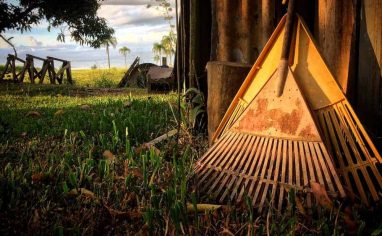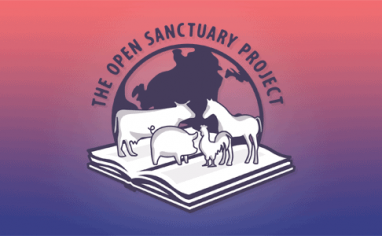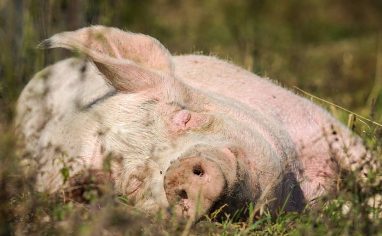
If your sanctuary is located in an area where the cold season could make a substantial impact on your organization’s operations, it’s very important to consider the needs of both your residents and any humans on site, and what you’ll need to provide and prepare for in order to keep everyone safe and healthy.
If Nothing Else, Everything Will Likely Take More Time And Effort
When it’s particularly cold, icy, or snowy, you should expect almost every daily sanctuary activity to take much longer and more effort than usual. It will likely take more time to get around, to ensure drinking water is available and unfrozen, to perform daily observations of all residents, feed everyone, and more. This may require modifying your schedule in a way to prioritize certain activities over others to ensure all critical duties are completed, or assigning modified roles to staff members and experienced volunteers to make sure everything gets done.
Cold Weather Issues To Contend With
Depending on the exact mix of cold weather you’re experiencing, you will need to be prepared for different challenges and adaptations to keep everyone safe. Any combination of the below issues will only compound the challenges of maintaining sanctuary operations.
Snow
Depending on the severity of a snowstorm, your sanctuary may face numerous challenges throughout the course of a day:
Physical Access To The Sanctuary
If dealing with a moderate to high volume of snow, it may become quite difficult for those living off-site to safely get to the sanctuary, especially if the sanctuary is located in an area where snow removal is not prioritized (if performed at all). You may need to plan for reduced staff and volunteer presence on days like this, or modifying shift schedules to account for either a later start in the day, or an earlier conclusion to sanctuary activities if snow is rapidly accumulating throughout the day.
If the snow is particularly heavy, you may want to consider planning for staff or volunteers to shelter at the sanctuary until the storm subsides. It may also be valuable to communicate in advance of poor weather conditions to your staff about coming challenges, whether certain staff members should come in at all (if their jobs can be conducted remotely), and whether essential staff should plan on staying on-site if the coming weather seems particularly poor.
Charting A Path On Sanctuary Grounds
Even if roads are somewhat clear, a sanctuary contending with a moderate to high volume of snow will need to shovel their way out to the resident living spaces and to all necessary structures. In addition to ample shovels and ice-breaking tools, for smaller sanctuaries, a snowblower may be a valuable investment; for larger organizations, a tractor or plow truck may be important tools for making quick work of snowy paths. If it is still warm enough to allow for outdoor access, snow may or may not need to be cleared in certain resident outdoor living spaces; if it begins to negatively impact the traction of different resident populations, you will likely need to either clear the snow or keep residents indoors to protect their well-being.
Addressing Falling Hazards
In addition to addressing the grounds of your sanctuary in a snowstorm, you may also need to be vigilant against the risk of accumulating snow or ice on structure roofs, especially in areas where residents congregate or walk past. There could be significant risks to residents should a large volume of snow or ice fall on them suddenly. You may need to assign a staff member or volunteer to be on the lookout for particularly concerning accumulations on roofs with a large tool to coax snow and ice off safely from a distance.
The Value Of On-Site Staff
If your sanctuary has appropriate accommodations, staff or volunteers who reside on-site can be a valuable addition in more inclement weather conditions- this way, there will always be someone available to ensure that critical care can be provided even if roads are impassable, or if someone needs to sound the alarm and take quick action should pipes freeze or utilities fail.
Ice
Ice is one of the most challenging elements of cold weather at sanctuaries. Excessive ice can cause substantial hazards to both humans and sanctuary residents.
Traction Hazards
Slipping and falling is a serious risk both to residents and humans alike. For some species or individuals, a fall could have catastrophic, permanent health consequences, especially in the case of large breed chicken or turkey residents, larger cowsWhile "cows" can be defined to refer exclusively to female cattle, at The Open Sanctuary Project we refer to domesticated cattle of all ages and sexes as "cows.", or pigs. Ice must be addressed in all outdoor resident living spaces prior to letting residents out.
Adding traction to resident spaces must also take into account the risk to residents’ feet or hooves; certain de-icers may either be too caustic and could cause injury, and salt-based de-icers could potentially be consumed by curious residents, which may result in salt poisoning or other health concerns. Certain types of cat litter may help provide traction, though these are sometimes enthusiastically eaten by certain avian residents, which could cause crop impaction. Ultimately, a sanctuary must consider the behavior and health needs of individual residents when considering how to make icy areas safe for residents, or keep residents from icy spaces entirely.
For humans, ice is also a hazard; staff, volunteers, or visitors could potentially slip and fall while traversing sanctuary grounds or during the course of daily caregiving or when moving around buckets of water for resident consumption. Not only can falls cause serious injury, but leaving icy areas unaddressed could result in a legal challenge should someone get very hurt and believe it was due to the organization’s neglect.
Frozen Ponds And Other Bodies Of Water
If your sanctuary has a larger body of water on site, such as a pond, stream, creek, or lake, freezing temperatures could cause these features to become quite dangerous, both to residents and humans. Both humans and sanctuary residents should not be given access to these frozen features, which may require both signage and physical barriers in certain sanctuary configurations. Anyone could easily fall below a layer of ice and become trapped, which is very much a life-threatening scenario.
Very Cold Temperatures
Depending on where a sanctuary is located in the world, what is typically considered “cold”, and the species populations that a sanctuary cares for, “very cold” could mean very different thresholds. But generally, “very cold temperature” refers to an ambient temperature or wind chill where it is not advisable for some or all residents or humans to spend time outdoors in order to protect their health and comfort.
Maintaining Resident Comfort And Safety
You should be mindful of both the comfortable and safe thresholds of temperature for the residents in your care. While it may seem heartless to allow certain species to spend time outside in weather that you can’t cope with, it’s important to remember that different species have far different experiences when it comes to cold and heat! Check out our resident temperature resource to get a better sense of what an acceptable temperature is for each of the species in your care, as well as when you may need to supplement heat. If you do not supplement heat when it’s necessary, you can risk causing significant health issues in animals, such as frostbite.
Blankets And Coats For Residents
Blanketing or giving a coat to a resident must be considered both on an individual and species basis. For many species, blanketing is not an appropriate action, whereas for others, it can be done successfully in limited circumstances for a planned period of time with regular evaluation to ensure they are not causing any issues. Regardless of the species, it’s important not to blanket or provide coats for any individual who is already quite wet, or place a soaked coat or blanket on them- this can cause far more issues than they solve!
Coats For Goats
Depending on the temperature, goats may be the first mammalian residents to start shivering. Whereas pig residents may bury themselves in a giant straw nest and only come out to eat or relieve themselves, goats often do not take the same proactive measures to warm up. Young goats, older goats, and thin goats may all need coats, and in some cases, may need multiple coats. When fitting a coat on a goat, it must be fit in a way that it does not cause any unnecessary discomfort or accumulate urine or waste accidentally.
Coats For Sheep And Cows
Typically, adult sheep and cowWhile "cow" can be defined to refer exclusively to female cattle, at The Open Sanctuary Project we refer to domesticated cattle of all ages and sexes as "cows." residents do not require coats, unless they are partially shaved due to a medical procedure, have experienced substantial hair loss, or have underlying medical conditions. Very young lambs and calves may benefit from coats under certain circumstances.
Blankets Or Coats For Equines
Typically, blanketing or putting a coat on a healthy horse resident should be restricted except in special circumstances as suggested by a veterinarian. When the weather begins to cool, they will start growing a nice winter coat to help keep them warm. In some circumstances, their own coat may be lacking due to health issues and a blanket could be considered. Particularly young or older horses are more likely to require blanketing. Healthy horses are generally able to withstand colder temperatures without a blanket. In fact, a blanket can compress their winter coat, reducing the coat’s insulating properties! However, in extreme weather situations (below -10 degrees) you might consider blanketing. Check with your veterinarian to see what they feel is best in those circumstances.
It may surprise you to learn that donkeys are not necessarily as hardy as horses (particularly cold-blooded breeds) in colder weather. Donkeys do not grow particularly lush winter coats like horses, and to a lesser extent, mules (even if they seem fluffy, they aren’t quite as insulating). This means they may be more susceptible to the cold than other equine residents. While healthy individuals are usually able to tolerate cold temperatures, some may require blanketing in extreme weather. As with other species certain individuals are more likely than others to require help fending off the cold, these being particular young, old, or ill residents. Use care; check blankets and skin under the blankets for sweat. If they are sweating, you should remove the blanket or switch it out for a lighter one. Dampness is dangerous.
Blankets Or Coats For Llamas And Alpacas
Generally speaking, both llamas and alpacas can withstand cold weather fairly well and don’t require blanketing. During extreme cold weather events, exceptions to this may be older, thinner, or ill residents, or criasYoung llamas or alpacas. Additionally, some llamas and alpacas have lighter coats that may not protect them as well. In addition to blanketing, a newborn criaA young llama or alpaca or a very frail individual may benefit from a neck protector/warmer. These can be quickly made from an old sweatshirt or sweater if the situation requires immediate action. As with any other species who may occasionally benefit from a blanket, never put on a wet blanket or put a blanket on a damp coat. Be sure to check the blankets periodically for sweat. If they are sweating, the blanket should be immediately removed (as they do not require one!) or replaced with a lighter one.
Sweaters For Avian Residents
Many avian species, including chickens and turkeysUnless explicitly mentioned, we are referring to domesticated turkey breeds, not wild turkeys, who may have unique needs not covered by this resource., puff up their feathers to help keep warm. This allows them to trap air under their feathers which helps insulate them. A sweater will prevent them from being able to do this, and may actually make them colder than they would be without this intervention. Individuals who are not fully feathered, such as those who have had a late molt or a medical procedure that required a portion of feathers to be removed, may benefit from a sweater, though they can interfere with new pin feathers as they come in. Sweaters also come with other challenges, such as being a great hiding spot for external parasites and potentially chilling a resident if they become damp. Some individuals may not enjoy wearing a sweater, and a sweater-wearing individual may also become a target for bullying behaviors by flockmates. It may be better to keep individuals who have large portions of exposed skin indoors during cold spells.
Human Safety
In addition to considering the comfort and safety of residents in winter conditions, it’s also important to consider the comfort and safety of humans at the sanctuary. Consider ensuring that your sanctuary has a warm, sheltered environment for staff, volunteers, and visitors (if they’re at the sanctuary in these conditions- we would recommend not hosting visitors during the cold season to avoid exposing them to weather hazards) to warm up and dry off as necessary. A hot water kettle with tea bags, cocoa, or a coffee machine and snacks can go a long way to keeping morale high on frigid shifts! You may also wish to provide extra warm weather gear to staff who are expected to be outdoors, or keep hand and toe warmers available for extra cold days.
If part of your caregiving team consists of interns, it can be helpful to keep a supply of extra cold weather gear just for them as a courtesy, such as hats, gloves, coats, scarves, clean warm socks, and boots, so that nobody arrives to a shift unable to help out comfortably.
At the beginning of a caregiving shift on a particularly harsh day, it can be valuable to voice the need for slow and steady activities over speed. A less frenetic pace means less of a risk of staff members slipping, less exhaustion, and less risk of incidents such as humans spilling water on themselves when cleaning and replenishing resident drinking stations. You should also clearly communicate any risks or hazards anticipated by the weather if you have staff or volunteers with disabilities planning on working a shift.
Utilities Concerns In Cold Weather
Poor weather conditions can easily lead to unreliable utilities at an animal sanctuary. Depending on the needs of a sanctuary resident population and the availability of alternative supplies, being caught without certain utility access without a plan can be disrupting, or even devastating to a sanctuary’s operations. For this reason, it’s important to always consider what plans you’d need to enact if you needed to adapt for a day, or potentially even longer.
Electricity
Depending on the reliability of your organization’s power source (and how important electricity is for keeping your residents safe and comfortable), you may want to invest in a gas-powered generator to keep on hand for emergencies. While a smaller generator may not power everything you want at your sanctuary, it can be a helpful investment to keep on hand for dire emergencies, such as if you need to keep an area for neonates or older residents warm in the middle of a power outage. Just be sure that you never use the generator indoors, and always operate it in a well-ventilated area on a piece of land that is safe from any kind of fire risk!
For a more eco-friendly (but more expensive) option, your sanctuary could invest in solar or wind energy, along with a battery backup system, which could also keep your electricity bills lower in addition to being available in times of need! These alternative energy projects may be excellent for sanctuaries looking for future improvements to strive towards.
Heat
If the indoor temperature of your residents’ living spaces are reaching concerningly low temperatures for the species within, you may want to use supplemental heating devices in order to keep your residents healthy. However, you must be aware that certain types of heating are much riskier in terms of fire safety than others. Please read our fire safety resource to learn more about which heating devices to use and avoid in a sanctuary environment! Fires are tragically common at sanctuaries, with devastating results.
If you do decide that supplementary heating is necessary to protect the health of your residents, it’s very important that you provide adequate ventilation of all living spaces. Appropriate ventilation may be maintained by using an exhaust fan or by cracking windows or doors open to allow for a cross breeze to dry out the space. Humidity can easily accumulate in warmed living spaces occupied by residents; allowing these spaces to become too humid could result in substantial health issues for residents, including pneumonia. If you can feel condensation on walls, you must ventilate that living spaceThe indoor or outdoor area where an animal resident lives, eats, and rests. as soon as possible to protect your residents.
Water Lines
In the event of extreme cold weather, your organization might need to contend with the risk of freezing water and water pipes. If your water pipes are at risk of freezing on your property, you may wish to consult with a licensed plumber on an appropriate mitigation option to prevent this from happening, such as extra insulation for pipes, heat tape or pipe heating systems, or keeping a drip of water going on faucets if the temperature starts to plummet. A burst water pipe could easily become an emergency at a sanctuary, especially if it starts to spread icy water around in a resident living space. If the sanctuary’s sole water source is frozen or unavailable, you will need to find an alternative water supply to quench your residents’ thirst, which may require significant additional time and effort to coordinate.
Modifying Routines
It is not unusual to need to adjust routines during periods of cold or snowy weather in order to get the most critical aspects of care completed throughout the day, while keeping staff and residents safe and healthy. Examples of modified routines at a sanctuary may include:
- Changing where and when certain resident populations get fed (for instance, you may need to feed certain populations indoors during this time, which could require moving residents to different parts of a living space in order for everyone to get enough food without confrontationalBehaviors such as chasing, cornering, biting, kicking, problematic mounting, or otherwise engaging in consistent behavior that may cause mental or physical discomfort or injury to another individual, or using these behaviors to block an individual's access to resources such as food, water, shade, shelter, or other residents. behaviors).
- Changing how you perform cleaning in a resident living space (for instance, you may modify which cleaning tasks you accomplish throughout the day to accommodate residents who must remain indoors, or moving residents to an adjacent living space while performing critical cleaning tasks to keep them happy and healthy).
- Encouraging staff and volunteers to take more frequent breaks to warm up and stay properly hydrated.
- Postponing or modifying health checks (if they are safe to be modified or postponed) in order to accommodate residents remaining indoors or a lack of time to get more pressing needs accomplished throughout the day, and postponing or modifying health treatments that may not be in the individual’s best interest given the current weather (for example, adjusting a particular treatment in order to avoid getting a resident wet during dangerously cold weather) .
- Prioritizing certain care activities, such as ensuring resident drinking water (and waterfowl dunking water) is clean and unfrozen throughout the day to prevent dehydration or other health issues, such as salt poisoning in pig residents. If water frequently freezes at your sanctuary, it may be valuable to explore heated auto waterers to ensure residents remain safely hydrated throughout cold weather events.
If Residents Must Stay Indoors, Consider Expanding Enrichment
In some regions of the world, it can become so cold or icy that it is not safe to allow certain species to be in their outdoor living spaces, either during certain parts of the day, or even for weeks on end. At times like these, it’s critical to consider that the individuals in your care will need additional enrichment to improve their quality of life, stave off boredom, and reduce confrontational behaviors towards their herd or flockmates. Consider exploring our species-specific enrichment resources to find appropriate enrichment opportunities!
If prolonged indoor confinement begins to cause residents to no longer safely get along with one another, you may need to consider an alternative living arrangement to help keep the peace during this time.
Planning Ahead
It can be helpful to regularly check the forecasts of upcoming weather trends in your area so you can make adjustments to your residents’ routines proactively rather than as a response to a concerning weather event. For instance, you may want to close in certain populations who typically get outdoor access overnight if there is a risk of ice or significant snow accumulation before staff returns. This way, you can ensure that nobody needs to be guided around dangerous terrain when you begin your morning caregiving shift. If you are not planning to have staff be available on-site after a certain hour of the day, it may be prudent to adjust your resident routines early, even if upcoming weather concerns are not certain.
There’s a lot that goes into ensuring that a sanctuary will be ready when cold weather strikes. We hope that you and your residents stay safe, warm, and cozy this winter!
Infographic
Looking to share information about antimicrobial resistance in an accessible way? Check out and share our infographic below!
Winter Staff Safety Infographic by Julia Magnus
The first text box is headed “1. Keep Tabs On The Weather.” The text below reads “Monitor weather reports and road conditions regularly and communicate with staff and volunteers frequently, especially those who commute and those who may need stay on site!” Next to that box is an image of a person on the phone while watching a weather report on the TV.
The second text box is headed “2. Allow Extra Time And Schedule Thoughtfully.” The text below reads “Keep in mind most tasks will take longer, so modify your staffing schedule as needed and adjust duties and roles in order to make sure you have coverage for all necessary tasks.” Next to that box is an image of a clock, and a calendar with a bubble pointing to a date that includes an image of a person.
The third text box is headed “3. Beware of Ice And Snow Hazards.” The text below reads “Chart necessary paths to living spaces in advance and keep traction forefront in mind, both in terms of resident and caregiverSomeone who provides daily care, specifically for animal residents at an animal sanctuary, shelter, or rescue. safety. Keep an eye out and remove any ice or snow that presents falling hazards.” Next to that box is an image of a goat standing next to a person shoveling snow.
The fourth text box is headed “4. Provide Caregivers With Warm Shelter.” The text below reads “Make sure all humans have access to a warm shelter where they can take frequent breaks as needed, as well as warming drinks and ways to stay hydrated, hand and toe warmers, and all necessary cold weather gear. Keeping extra gear on hand is a great idea!” Next to that box is an image of a house with a winter storm outside, with a warm fire burning in the house.”
The fifth text box is headed “5. Monitor Utilities Carefully.” The text below reads “Create contingency plans in case extreme weather impacts electricity, heat, or water pipes. Make sure backup infrastructure is safe from a fire safety and resident safety standpoint.” Next to that text box are stylized symbols representing utilities: a building, a lightning bolt, a water drop, and a leaf.
The sixth box is headed “Modify Routines As Needed To Ensure Caregiver Safety.” The text below reads “Feeding, enrichment, health checks, and living space cleaning protocols may need to be shifted if residents are being cared for indoors due to inclement weather. Make the necessary changes to ensure caregiver and resident safety.” The image next to that text box is of a caregiver kneeling and offering a gooseUnless explicitly mentioned, we are referring to domesticated goose breeds, not wild geese, who may have unique needs not covered by this resource. resident food treats by hand.
At the bottom of the page there is a link reading “OpenSanctuary.Org.”
SOURCES
9 Reasons Your Chicken Should Not Wear A Sweater | Wide Open Pets








